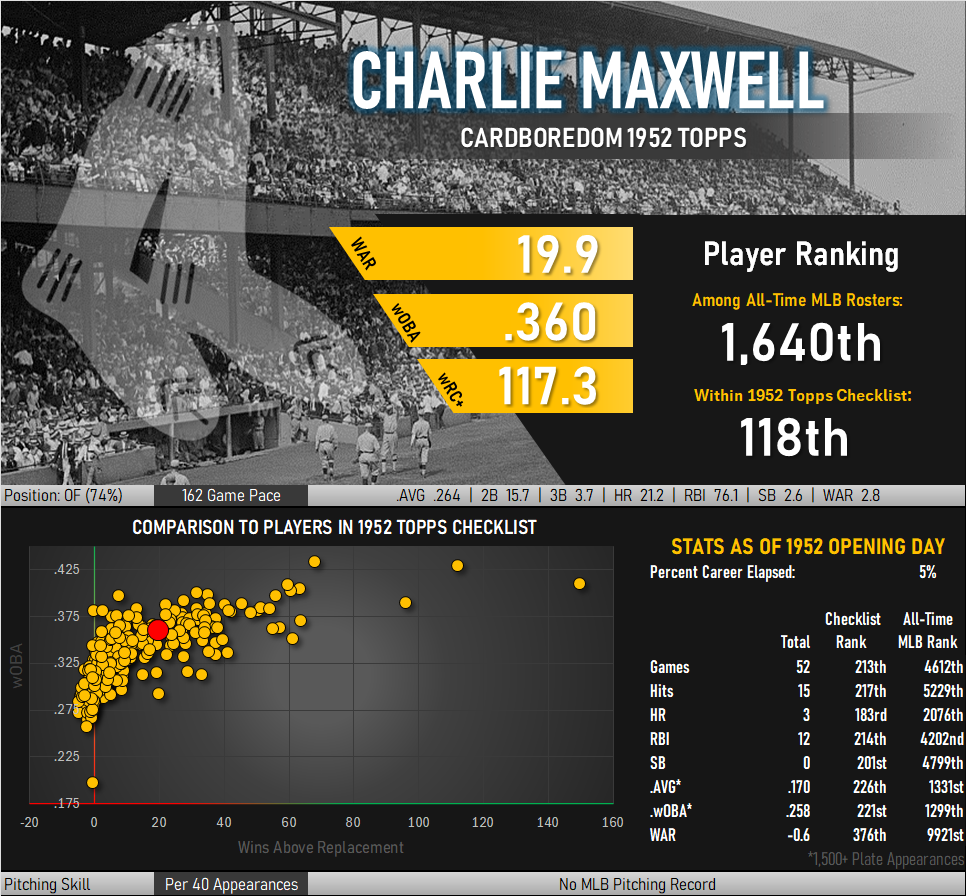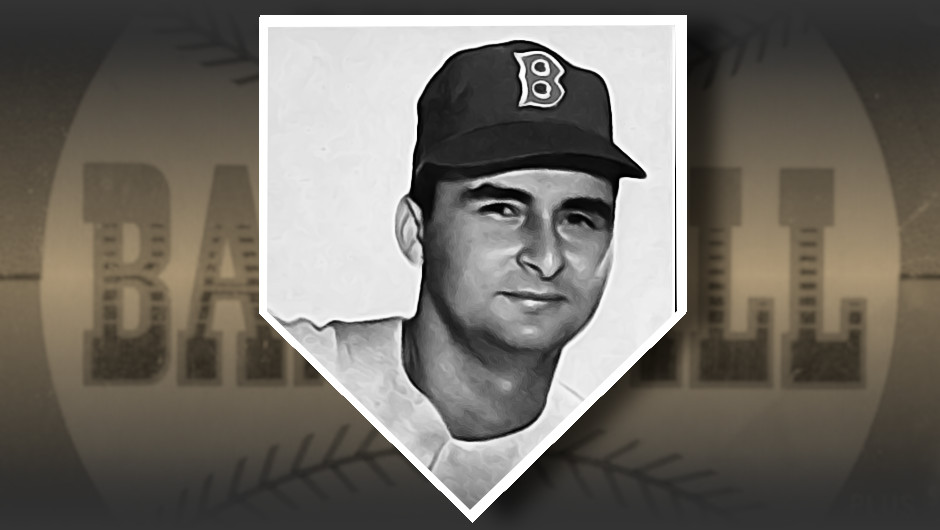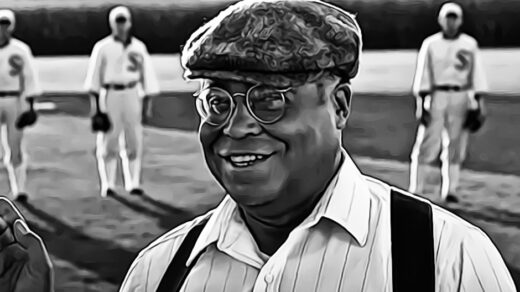There is a rookie card with an identity crisis appearing in the middle of the 1952 Topps set. Card #180 features a new Boston Red Sox outfielder who had appeared in just a handful of games between 1950-1952. The biographical text on the back states he had already been sent back to the minors for the season. The card also gives him four different names: Charley; Charlie; Charles; and Smokey. An interviewer asked Maxwell in 2013 for a definitive answer, to which he received an emphatic spelling of C-H-A-R-L-I-E as the preferred spelling.
My particular example is signed by Charlie, who added the additional nickname “Ole Paw Paw.” A native of a Michigan village of the same name, he still resides in the area and has become synonymous with the small town. Paw Paw has a population less than 10% of Fenway Park’s seating capacity, giving an idea of just how small the village is.

Maxwell has another nickname that managed to elude this card. Hitting 40 of his career 148 home runs in Sunday ballgames, he became known among Detroit fans as the “Sabbath Slugger” or “Sunday Charlie.” Maxwell could certainly hit, taking Satchell Paige deep for a grand slam in a pinch-hit appearance one year before this card was produced. He was fantastic in 1956-57, generating more than 10 wins above replacement in that span. Four consecutive home runs on May 3, 1959 (another Sunday!) added to the offensive highlights.

There is another cardboard Maxwell mystery that revolves around more than just the spelling of his name. There seems to be a premium associated with it and a handful of players with cards numbered 171-190. These cards are suspected of being potentially short-printed relative to other members of 1952 Topps’ 60-card third series. Topps produced the cards at a rate of 100 per sheet, a quantity that does not divide evenly by 60. Cards #131-170 were apparently printed twice with #171-190 making a single appearance in production runs.
That being said, I’m not entirely sold on the idea that these last 20 cards are necessarily rare. Third series cards are still relatively plentiful, regardless of card number. Topps certainly single-printed the cards in question, but it does not rule out the possibility that three different sheet arrangements may have been put into production before moving on to the fourth series. Topps may have wanted even production numbers and could have directed differing ratios to various geographic regions to promote buying additional cards and promoting sales. Third party graded populations and active listings on eBay do not seem terribly out of line for any of these cards, suggesting they are not any harder to find than numbers 131-170. Looking at my records of completed eBay transactions, Maxwell’s card averages 36 sales every 90 days compared to a mean of 37 examples for the rest of the third series checklist.









